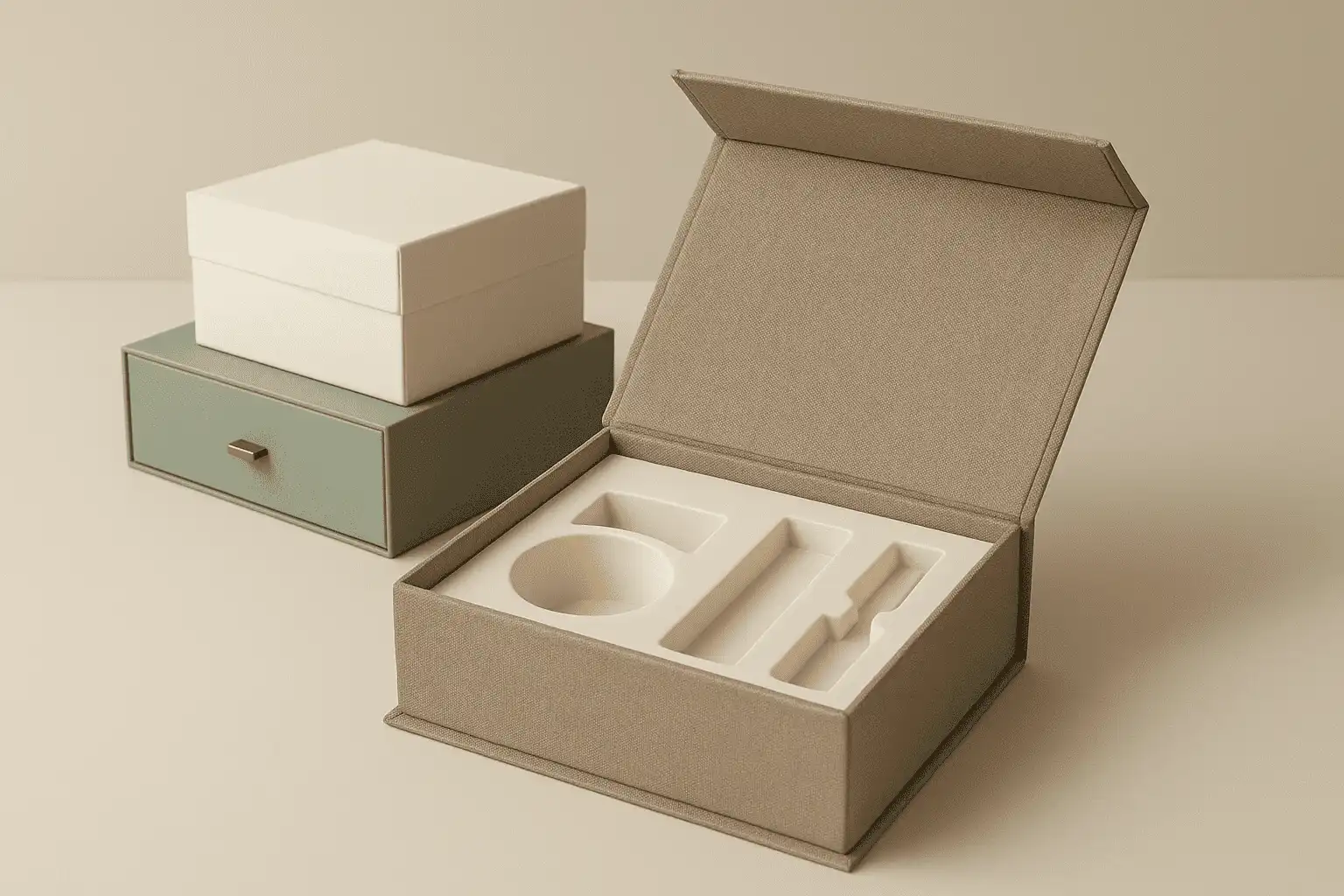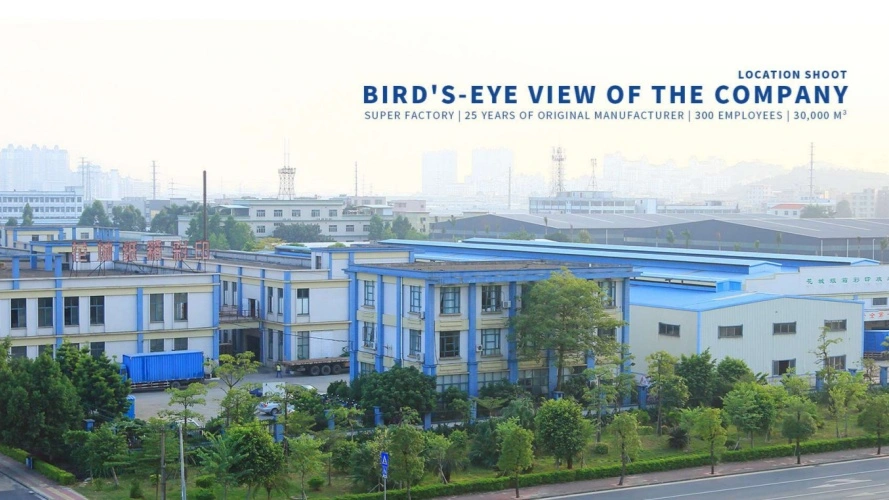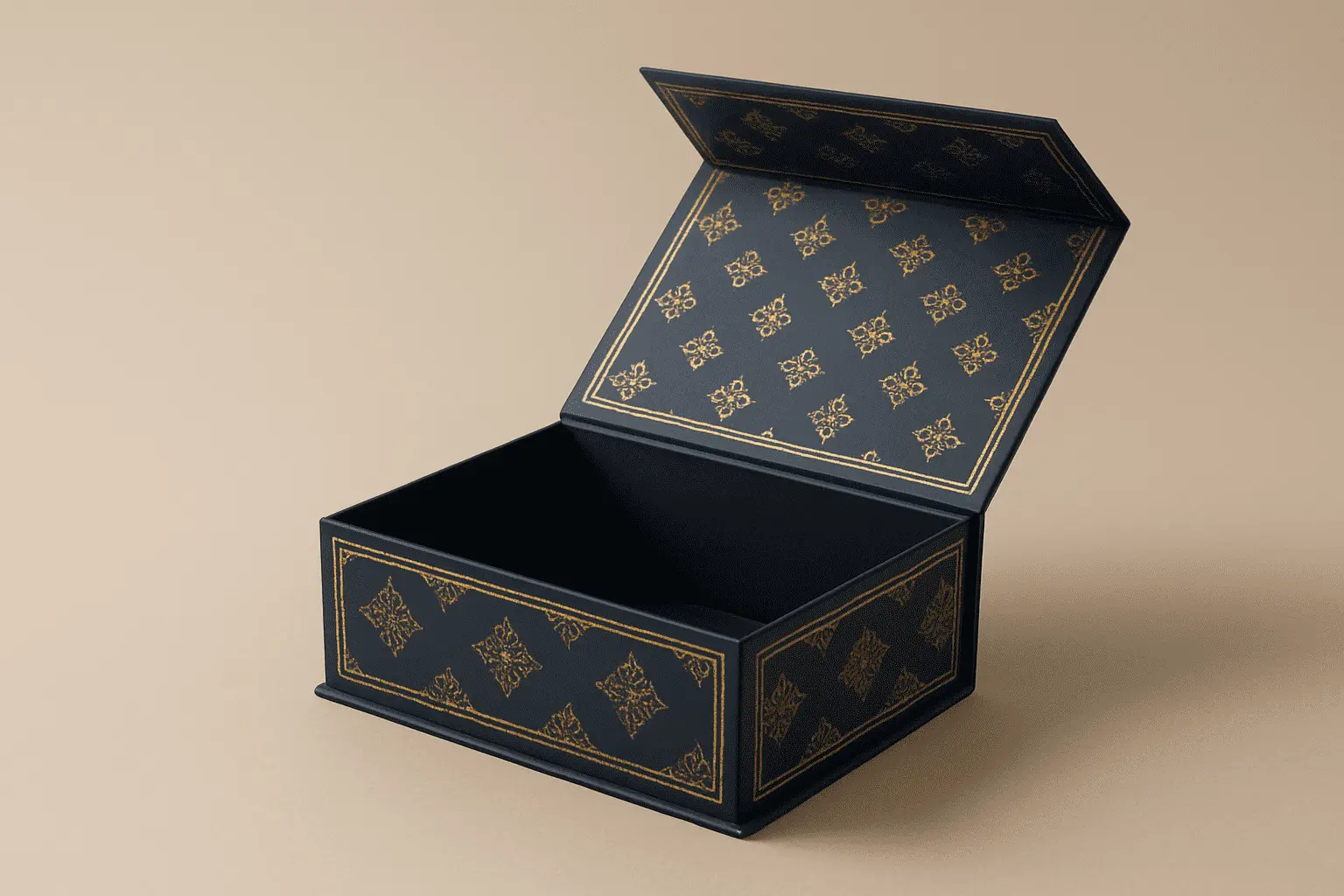Packaging for Home Goods: Which Box Type Works Best
Picture this: you've just launched your new home goods line, but your beautiful products arrive at customers' doorsteps damaged, crushed, or looking unprofessional due to poor packaging choices. This nightmare scenario affects countless businesses daily, costing them revenue, reputation, and customer loyalty. The truth is, selecting the right home goods packaging box isn't just about protection—it's about creating an unforgettable unboxing experience that transforms first-time buyers into lifelong customers while ensuring your products arrive in pristine condition.

Understanding Home Goods Packaging Requirements
The home goods industry encompasses a vast array of products, from delicate glassware and ceramics to bulky furniture accessories and decorative items. Each category demands specific considerations when selecting the appropriate home goods packaging box solution. The challenge lies in balancing protection, cost-effectiveness, and brand presentation while meeting the diverse needs of products that vary dramatically in size, weight, fragility, and value. Modern consumers expect more than just functional packaging—they desire an experience that reflects the quality and values of the brand they're supporting. A well-chosen home goods packaging box serves multiple purposes: it protects the product during transit, communicates brand identity, reduces shipping costs through optimized dimensions, and creates memorable moments that encourage social sharing and repeat purchases. Understanding these multifaceted requirements is crucial for businesses looking to establish a competitive edge in the crowded home goods marketplace.
-
Material Considerations for Home Goods Packaging
When evaluating materials for home goods packaging box solutions, several key factors influence the decision-making process. SBS C1S (Solid Bleached Sulfate – Coated One Side) offers exceptional print quality with its bright white appearance and smooth coated surface, making it ideal for premium home goods that require sophisticated visual presentation. The uncoated reverse side provides excellent glue adhesion, ensuring structural integrity throughout the distribution chain. For luxury home goods requiring dual-sided printing capabilities, SBS C2S delivers superior visual appeal with its coated surfaces on both sides. This material choice proves particularly valuable for products that benefit from inner packaging graphics or structural designs requiring consistent print quality throughout the home goods packaging box construction. The virgin bleached pulp composition ensures food safety compliance for kitchen and dining products while maintaining the structural strength necessary for protecting valuable items. Cost-conscious brands often gravitate toward CCNB (Clay Coated News Back) for their home goods packaging box needs, as it provides reliable print performance at a fraction of the cost of premium alternatives. The clay-coated front surface delivers excellent printability for brand graphics and product information, while the grey recycled back contributes to sustainability initiatives without compromising structural integrity. This material choice particularly suits high-volume home goods operations where cost efficiency remains paramount while maintaining acceptable quality standards.
Rigid Box Solutions for Premium Home Goods
Rigid boxes represent the gold standard for premium home goods packaging, offering unparalleled protection and luxury presentation that justifies higher price points. These home goods packaging box solutions utilize various substrate materials, including grey chipboard and duplex chipboard, each bringing distinct advantages to specific applications. Grey chipboard provides exceptional strength and rigidity through its multi-ply construction, making it ideal for heavy or valuable home goods that require maximum protection during shipping and handling. The manufacturing process for rigid home goods packaging box solutions involves precise die-cutting, expert gluing and assembly techniques, and careful attention to dimensional accuracy. Advanced production capabilities, including automatic visual positioning box production lines, ensure consistent quality while reducing manufacturing time. This efficiency proves crucial for businesses requiring quick turnaround times without compromising the structural integrity essential for protecting delicate home goods during distribution.
-
Collapsible Rigid Box Innovation
Revolutionary collapsible rigid box technology addresses one of the most significant challenges in home goods packaging: storage and shipping efficiency. These innovative home goods packaging box solutions combine the luxury presentation of traditional rigid boxes with the space-saving benefits of flat-pack design. Available in three optimized sizes—Large (suitable for products 100-150mm in height), Medium (50-100mm products), and Tiny (20-50mm products)—these proprietary designs offer significant cost advantages. The engineering breakthrough behind collapsible rigid boxes delivers remarkable savings, reducing shipping and storage costs by more than 60% compared to traditional rigid gift boxes and 20-30% compared to standard collapsible alternatives. This cost efficiency doesn't compromise visual impact, as these home goods packaging box solutions support advanced surface treatments including cold and hot foil stamping, UV coating, frosted touch effects, and embossing techniques that enhance overall packaging aesthetics.
Corrugated Solutions for Everyday Home Goods
Corrugated boxes form the backbone of efficient home goods distribution, particularly for mid-range products requiring reliable protection without premium pricing. The construction methodology involves layering a fluted medium between flat liner sheets, creating a structure that provides excellent cushioning while maintaining lightweight characteristics essential for cost-effective shipping. The fluted paper is typically sandwiched between two mediums in order to reinforce it while also providing extra cushioning to make it very durable, crush-proof, ensuring home goods arrive safely regardless of handling conditions. Modern corrugated home goods packaging box designs incorporate sophisticated printing capabilities, enabling brands to achieve professional visual presentation while maintaining cost advantages. Five-color flexographic printing processes deliver vibrant graphics suitable for retail environments, while die-cutting capabilities create custom shapes and functional features like carrying handles or display windows. These manufacturing capabilities transform basic corrugated materials into sophisticated packaging solutions that compete effectively with more expensive alternatives.
-
Corrugated Board Specifications and Applications
The selection of appropriate corrugated specifications depends heavily on the specific requirements of home goods being packaged. Single-wall corrugated provides adequate protection for lightweight, non-fragile items while minimizing material costs and shipping weights. Double-wall construction offers enhanced strength for heavier products or items requiring extended storage periods, while maintaining reasonable cost structures for volume operations. Advanced corrugated home goods packaging box designs incorporate structural engineering principles to maximize strength while minimizing material usage. Features like compression-resistant corners, reinforced edges, and optimized flute directions ensure products remain secure throughout the distribution chain. These engineering considerations prove particularly important for home goods susceptible to damage from stacking pressure or impact during handling.
Custom Die-Cut Packaging for Unique Home Goods
Die-cut packaging solutions address the unique challenges presented by irregularly shaped home goods that don't conform to standard rectangular box dimensions. Die-cut boxes are popular for creating personalized packaging that contours to a product's shape, making them ideal for items like soaps, candles, and electronics. Their lightweight yet strong structure protects fragile goods, while their compact design saves space during assembly and shipping. This approach proves invaluable for home goods manufacturers dealing with decorative items, lighting fixtures, or accessories requiring custom-fitted protection. The die-cutting process enables precise customization of home goods packaging box dimensions, incorporating features like product-specific inserts, viewing windows, or handling mechanisms tailored to specific user experiences. Custom metal dies create consistent, professional results while enabling complex shapes that would be impossible with standard packaging approaches. This capability particularly benefits artisanal or luxury home goods where unique packaging becomes part of the product's value proposition.
-
Advanced Die-Cutting Capabilities
Modern die-cutting technology extends far beyond basic shape creation, incorporating sophisticated features that enhance functionality and visual appeal. Creasing operations ensure clean, accurate folds without cracking coatings or inks, essential for home goods packaging box designs requiring precise assembly. Window cutting creates strategic openings that allow product visibility while maintaining structural integrity, particularly valuable for home goods where visual inspection influences purchasing decisions. Combination techniques like spot UV coating followed by embossing create tactile and visual effects that elevate perceived value. These surface treatments, when combined with precision die-cutting, transform basic home goods packaging box materials into premium presentation solutions. The integration of multiple processes during manufacturing reduces costs while ensuring consistent quality across production runs.
Printing Technologies for Home Goods Packaging Excellence
The visual impact of home goods packaging box designs depends heavily on printing technology selection and implementation. UV coating applications, whether applied overall or to specific areas, create dramatic visual contrasts while providing functional benefits like enhanced durability and moisture resistance. Spot UV coating particularly effective for highlighting brand elements or product information, creating tactile experiences that encourage customer interaction with packaging. Hot foil stamping elevates home goods packaging box aesthetics through metallic accents that convey premium positioning. Gold, silver, and colored foil options enable precise brand matching while creating shelf appeal that differentiates products in competitive retail environments. The heat and pressure application process ensures permanent adhesion, maintaining visual impact throughout the product lifecycle from manufacturing through consumer use.
-
Advanced Surface Finishing Techniques
Embossing and debossing create three-dimensional effects that add tactile interest to home goods packaging box surfaces. These techniques prove particularly effective for brand logos, product names, or decorative elements that benefit from physical prominence. The combination of embossing with other treatments like foil stamping creates layered effects that maximize visual impact while maintaining cost efficiency. Holographic foil stamping represents the pinnacle of anti-counterfeiting and premium presentation technology. Laser-etched microscopic patterns create angle-shifting colors and subtle textures that are virtually impossible to replicate, providing both security and luxury appeal for high-value home goods. This technology particularly benefits brands concerned about counterfeiting while seeking maximum shelf impact.
Conclusion
Selecting the optimal home goods packaging box requires careful consideration of product characteristics, brand positioning, cost constraints, and customer expectations. From cost-effective corrugated solutions to premium rigid boxes with advanced surface treatments, each approach offers distinct advantages for specific applications. The key lies in understanding how packaging choices impact protection, presentation, and profitability while aligning with brand values and customer needs.
Cooperate with GUANGZHOU FETCHING COLOR PRINTING & PACKAGING LTD.
As a leading China home goods packaging box manufacturer with over 25 years of experience, Guangzhou Fetching Color Printing & Packaging Ltd. combines industry expertise with cutting-edge technology to deliver exceptional packaging solutions. Our 50,000㎡ facility houses more than 300 skilled employees and advanced machinery including KBA106-(9+1) UV printing machines, Heidelberg XL162-6L printing equipment, and AI-powered gift box production lines that ensure consistent quality and efficient production.
Our comprehensive capabilities as a China home goods packaging box supplier encompass everything from initial design consultation through final delivery. With ISO14001-2015, ISO9001-2015, Smeta, G7 Color Management, FSC, and Disney certifications, we maintain the highest standards for quality management and environmental responsibility. Our R&D department features over ten packaging engineers specializing in new material applications, packaging structure development, and innovative process technologies that keep our clients ahead of market trends.
Whether you need high quality home goods packaging box solutions for folding gift boxes, display racks, mailer boxes, or custom die-cut designs, our team delivers cost-effective solutions that enhance your brand presence. As a trusted China home goods packaging box wholesale partner serving over 1,000 loyal customers, we understand the importance of reliable supply chains and competitive home goods packaging box prices. Contact us at public@fetchingprinting.com to discuss your packaging requirements and discover how our expertise can elevate your home goods presentation while optimizing costs and delivery times.
FAQ
Q: What's the best material for fragile home goods packaging?
A: SBS C1S or C2S provide superior protection with excellent print quality, while corrugated double-wall offers cost-effective strength for heavier items.
Q: How do collapsible rigid boxes reduce shipping costs?
A: They save over 60% on shipping and storage costs compared to traditional rigid boxes by shipping flat and assembling at destination.
Q: Which printing method works best for home goods branding?
A: UV coating combined with hot foil stamping creates premium visual impact while ensuring durability throughout the supply chain.
Q: What's the minimum order quantity for custom home goods packaging?
A: Minimum quantities vary by complexity, but typically start at 500-1000 pieces for custom die-cut designs and 1000-3000 for standard formats.
References
1. Smith, J.A. "Packaging Design Fundamentals for Consumer Products" - Journal of Packaging Technology, 2023
2. Williams, R.K. "Sustainable Materials in Modern Packaging Applications" - International Packaging Research Institute, 2024
3. Chen, L.M. "Cost-Effective Packaging Solutions for E-commerce Distribution" - Supply Chain Management Quarterly, 2023
4. Thompson, D.P. "Consumer Psychology and Packaging Design Impact Studies" - Marketing Research Association, 2024

Based on your location and order quantity, you will have the opportunity to receive a limited time free shipping promotion!

Corporate Purpose
